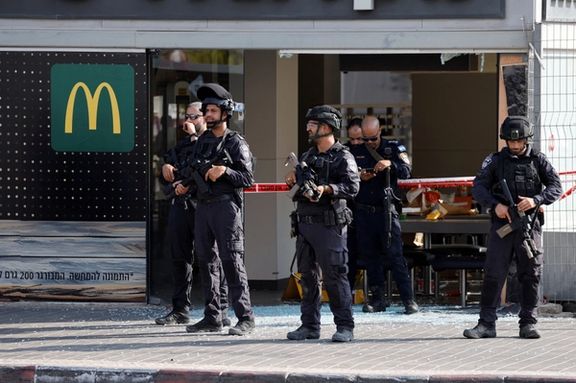It is the fifth assassination attempt foiled in last month, said Israel Police.
The group, from Beit Safafa, a village under Israeli control straddling East and West Jerusalem, had been recruited, like others revealed this year, through social networks.
Headed by a 23-year-old man who Times of Israel named as Rami Alian, they had been ordered to assassinate a nuclear scientist and a mayor from one of central Israel’s largest cities.
The Iranian handler had tasked him to recruit other members, who were all aged 19 to 23, without previous convictions.
Like other plots uncovered this month, the tasks had begun with minor operations such as painting graffiti against the government.
"The suspects carried out tasks of spraying graffiti in various places in Israel, setting fire to vehicles in the Ein Kerem area of Jerusalem and gathering intelligence," said Israel Police.
"The plot also included blowing up a police car and throwing a grenade at a house, all in exchange for $52,000," the statement by the police added.
The police explained that some of the suspects arrived near the residence of the senior scientist and, in exchange for $130, photographed the location with the intention to carry out the assassination.
"In the search conducted by the police in the suspects' houses, a sum of money of about $13,000, a fake police identification plate and a large number of credit cards were seized," Israel Police added.
Israel’s ex head of Interpol, Asher Ben Artzi, said the latest incident shows the depth of Iran’s operations to place cells across Israel. “Iranian intelligence knows how to work,” he told Iran International.
“What hurts me is they’re managing to infiltrate," he added, the extent of operations shocking even those who have been in the security apparatus for decades, such as Ben Artzi.
According to Channel 12, plans also included throwing a grenade at a soldier after Alian located a target who lived in Jerusalem, and received $4,000 to buy and throw the grenade. After that he was asked to photograph a scientific research institute, for which he received $1,300.
The source said the scientist was the final mission for the cell, with his name, place of work and other personal details having been laid out with preparations already made including attempts to purchase weapons.
According to Channel 12, the cell's motivations were nationalist, identifying as Palestinian and aware they were working directly with an Iranian agent. Beit Safafa has been under Israeli control since the 1967 war and is in proximity to volatile neighborhoods like Sheikh Jarrah, which have experienced recurring outbreaks of violence in recent years.
It is an area of Jerusalem which has also seen escalating Jewish settlement, heightening discord among the traditionally Arab Muslim population who are largely from middle and upper levels of Palestinian society, according to 2019 research by The Union of the Charitable Societies in cooperation with the Applied Research Institute.
The latest spy case comes just one day after a group of Azerbaijani-Israelis were arrested for having given intelligence to Iran which aided the ballistic attack earlier this month as well as a deadly Hezbollah attack on a military base near Haifa.
But it comes on the back of a series of cells being discovered in Israel, most shockingly, from Jewish backgrounds, all alongside the wars in Gaza and Lebanon as Israel takes on Iran's proxies on its borders.
This month has seen two separate cases of Russian-Israelis arrested accused of working for Iran but there have been cases of Jews from Jewish areas including Ashkelon and Beit Shemesh also arrested this year as cells become activated.
It remains unclear why Israeli authorities have been publicizing alleged Iranian infiltrations in recent weeks, particularly as tensions between the two sides have reached an all-time high.








